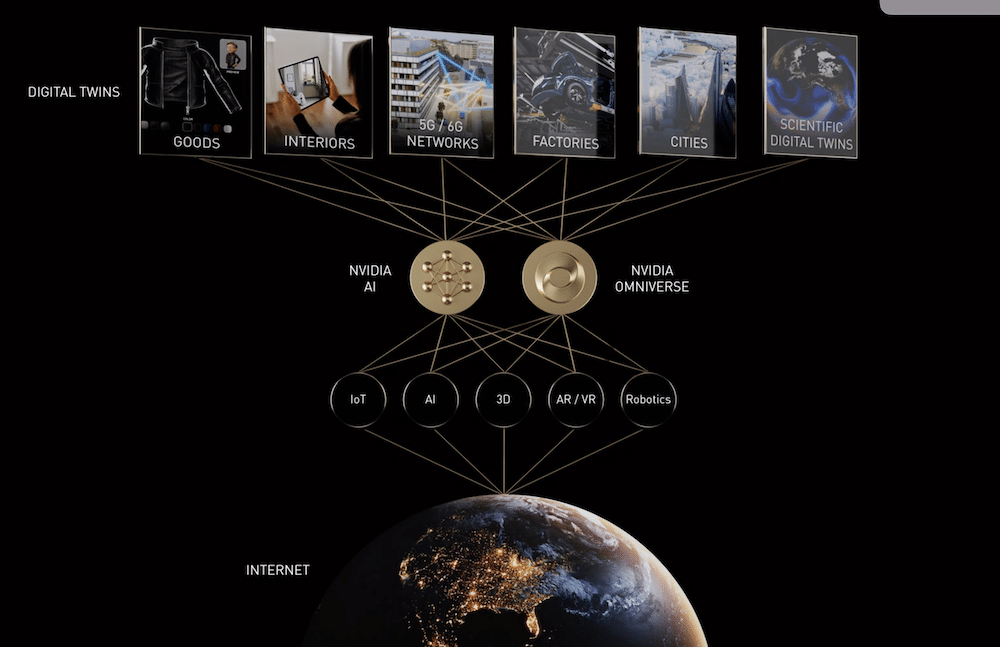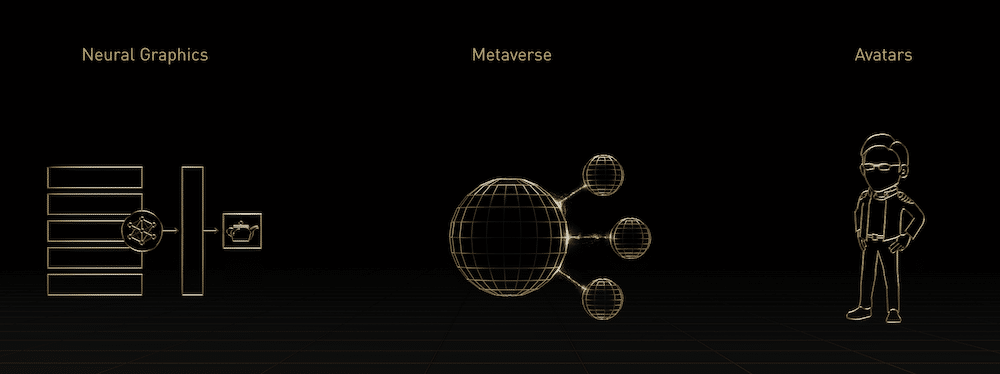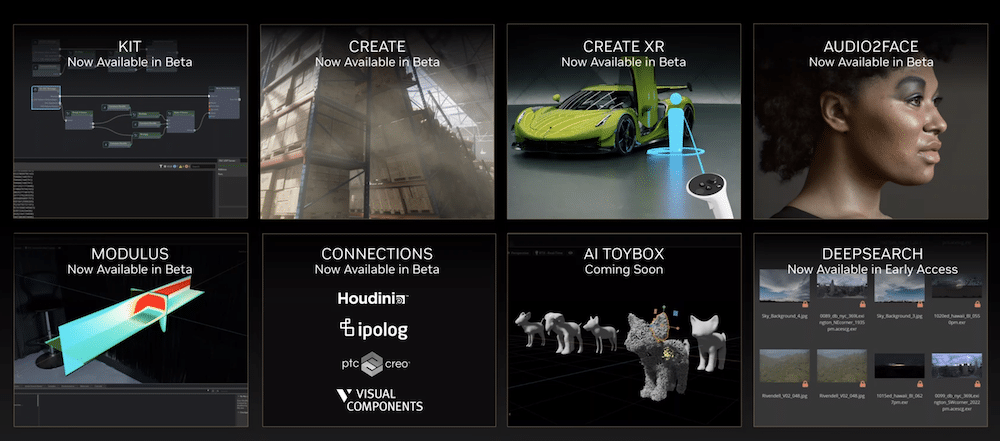NVIDIA used the SIGGRAPH conference to announce a wide range of developer frameworks, tools, apps, and plugins for NVIDIA Omniverse, the platform for building and connecting metaverse worlds based on Universal Scene Description (USD).
Omniverse is a multi-GPU scalable computing platform for creating virtual worlds. It is used globally by about 700 companies to enhance architectural and product design, simplify visual effects workflows and build digital twins of factories, cities, and the planet.

The Omnivers expansion includes several AI-powered tools and features that deliver artists, developers, and engineers the power to build virtual worlds and content easier and more seamlessly connect to leading 3D applications such as PTC Creo, SideFX Houdini, and solutions from the Siemens Xcelerator platform.
As Rev Lebaredian, NVIDIA’s vice president of Omniverse and simulation technology explained:
“The metaverse is a multitrillion-dollar opportunity that organizations know they can’t ignore, but many struggle to see a clear path forward for how to engage with it. NVIDIA Omniverse closes the gap between the physical and virtual worlds, and these new tools, technologies, and collaborations make it possible to leap into the 3D internet today.”
New Applications and Frameworks
NVIDIA’s CEO Jenson Huang announced the launch of Omniverse Avatar Cloud Engine (ACE), a suite of cloud-native AI models and services for building and deploying lifelike virtual assistants and digital humans.

NVIDIA also announced platform updates that include:
- Omniverse Kit — a toolkit for building native Omniverse extensions and applications:
- Significant updates to PhysX® in Omniverse, including real-time, multi-GPU scalable soft body and particle cloth simulation, helping bring more physical accuracy to virtual worlds and objects.
- New OmniLive Workflows — an overhaul of USD-based collaboration in Omniverse, bringing increased speed and performance to multiple app 3D workflows and enabling non-destructive USD workflows to make collaboration between artists and developers easier than ever.
- Omniverse Audio2Face — an AI tool that can create facial animations directly from an audio file introduces a significant leap in AI-driven animation with the new ability to infer and generate realistic emotions and animates all facial features.
- Omniverse Machinima — an app for easily building 3D cinematics and animated films, gets hundreds of new, free 3D assets from Post Scriptum, Beyond the Wire, and Shadow Warrior 3 games, plus a suite of new AI animation tools like Audio2Gesture – an AI that generates realistic arm and body motion from an audio file.
- Omniverse DeepSearch — now available for Omniverse Enterprise customers, DeepSearch helps teams use AI to intuitively and accurately search through massive, untagged 3D asset databases of visuals using natural language like “red, rusty barrel.” DeepSearch is a game-changing tool for game developers or VFX studios with hundreds of thousands of untagged assets that pose an immense challenge to search through. The award-winning studio Industrial Light & Magic is leveraging DeepSearch to unlock its ever-growing library of hundreds of thousands of environment assets.

Additionally, NVIDIA Modulus, a physics machine-learning framework, is newly available as an Omniverse Extension. Modulus-trained Physics ML models are 4,000x and even 100,000x faster depending on the application, delivering near-real-time performance while providing unprecedented accuracy closer to high-fidelity simulations. Modulus is one of the cornerstones of scientific digital twins, including NVIDIA’s Earth-2.
Building the Metaverse with USD Connectors
As part of a collaborative effort with its partners in the industrial, design, simulation, and CAD software ecosystems, NVIDIA unveiled 11 new Omniverse Connectors, which are USD-based plugins, expanding Omniverse workflows to companies in the industrial and scientific communities, bringing the total number of Connectors to the Omniverse USD ecosystem to 112.

Available in beta, Connectors for PTC Creo, Visual Components, and SideFX Houdini. Also announced was the ongoing development of Connectors for Blender, Autodesk Alias and Autodesk Civil 3D, Siemens JT, SimScale, and Open Geospatial Consortium, further unlocking metaverse workflows for manufacturing, engineering, and design companies.
Significant updates to the core simulation technologies representing materials, physics, and light in metaverse worlds were released.
- NVIDIA MDL — which has served for ten years as the material standard for a physically accurate representation of 3D materials — is now fully open source, enabling developers to bring material definition language support to any renderer.
- NeuralVDB, coming soon to beta, is the next evolution of OpenVDB and brings AI and GPU optimization to sparse volume datasets and reduces the memory footprint of these massive datasets by up to 100x.




 Amazon
Amazon